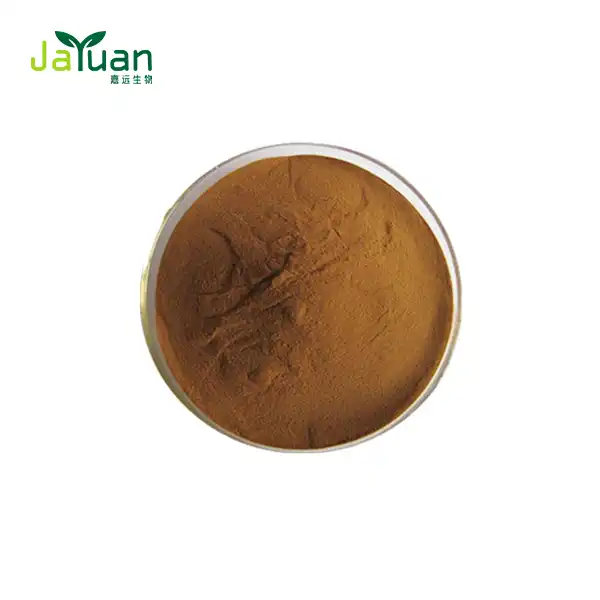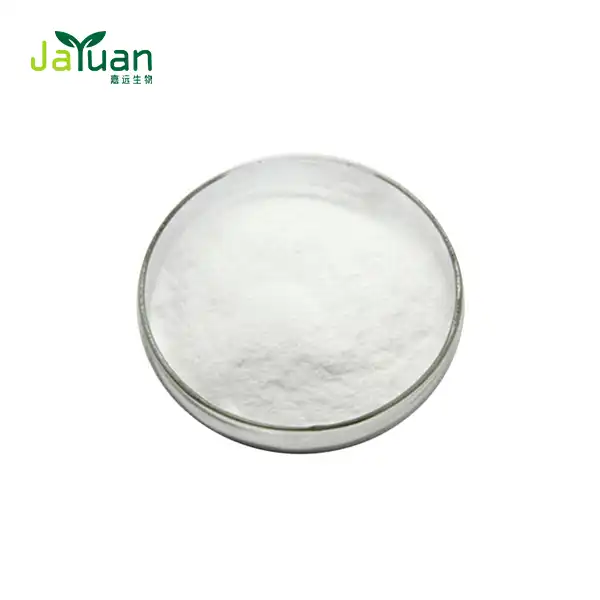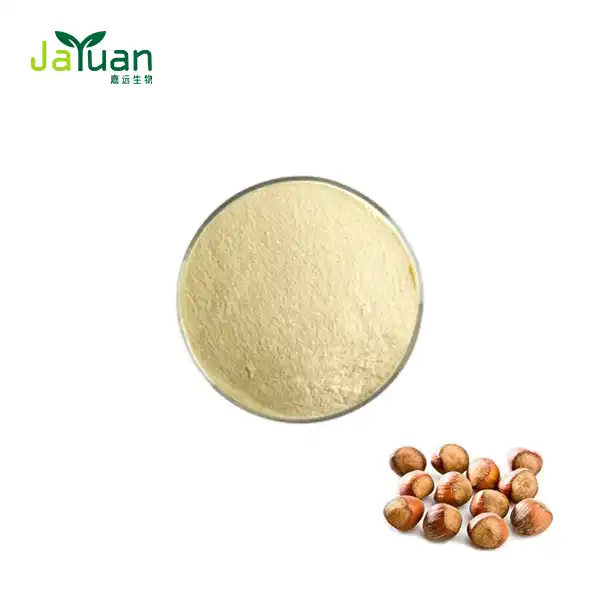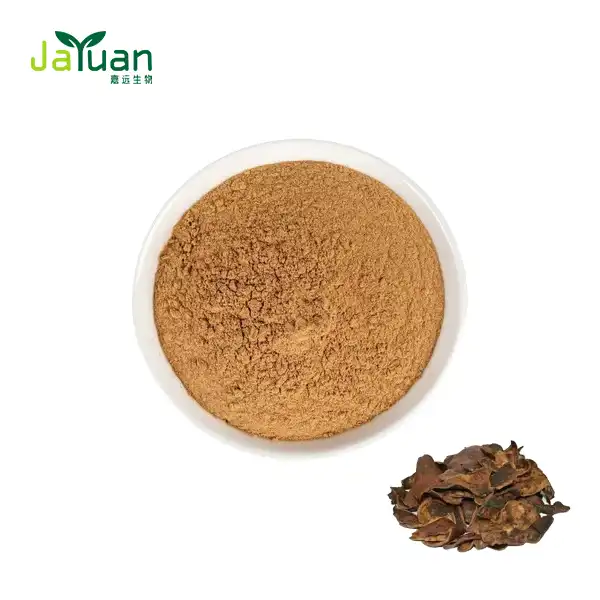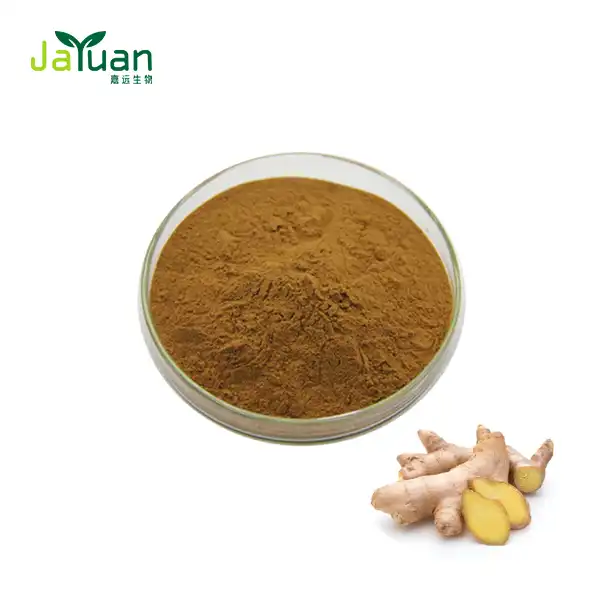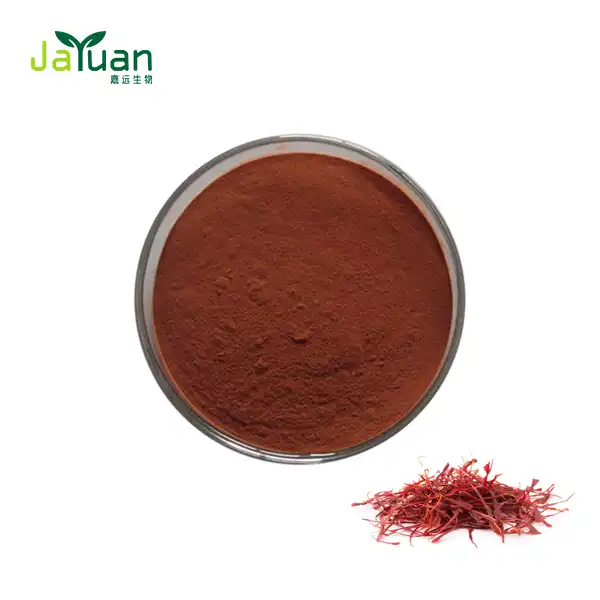What is the chemical structure of alpha arbutin?
Alpha arbutin has gained significant attention in the skincare industry for its potent skin-brightening properties. To truly understand how this compound works, it's essential to delve into its chemical structure. In this comprehensive guide, we'll explore the molecular composition of alpha arbutin powder, its key functional groups, and why its unique structure makes it so effective for skin brightening.
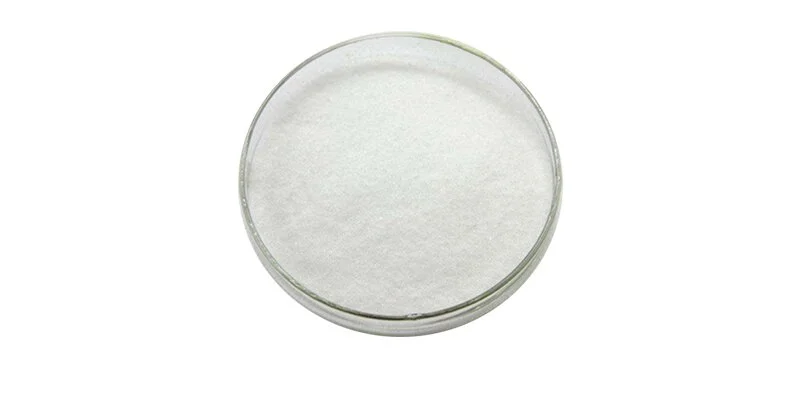
Alpha Arbutin Powder: Molecular Composition and Structural Formula
Alpha arbutin, scientifically known as 4-hydroxyphenyl α-D-glucopyranoside, is a glycosylated hydroquinone derivative. Its molecular formula is C12H16O7, with a molecular weight of 272.25 g/mol. The structural formula of alpha arbutin consists of a hydroquinone moiety linked to a glucose molecule through a glycosidic bond.
The core structure of alpha arbutin includes:
- A benzene ring with two hydroxyl (-OH) groups in the para position, forms the hydroquinone portion
- A glucose molecule attached to one of the hydroxyl groups via an α-glycosidic bond
This unique arrangement gives alpha arbutin powder its distinctive properties and makes it an invaluable ingredient in skin-brightening formulations. The glycosidic bond plays a crucial role in enhancing the stability and efficacy of alpha arbutin compared to its precursor, hydroquinone.
The structural formula of alpha arbutin can be visualized as a six-membered ring (the glucose molecule) connected to a benzene ring with two hydroxyl groups. This configuration allows alpha arbutin to interact effectively with skin enzymes and cellular components, leading to its skin-brightening effects.
Key Functional Groups in Alpha Arbutin for Skin Brightening
The efficacy of alpha arbutin powder for skin brightening can be attributed to its specific functional groups. These groups interact with skin enzymes and cellular components to inhibit melanin production and promote a more even skin tone. Let's examine the key functional groups in alpha arbutin and their roles:
Hydroxyl Groups (-OH)
Alpha arbutin contains multiple hydroxyl groups, which are essential for its skin-brightening properties:
- Two hydroxyl groups on the benzene ring (hydroquinone portion)
- Several hydroxyl groups on the glucose molecule
These hydroxyl groups contribute to alpha arbutin's ability to interact with and inhibit tyrosinase, the enzyme responsible for melanin production. The hydroxyl groups form hydrogen bonds with amino acid residues in the active site of tyrosinase, effectively blocking its activity and reducing melanin synthesis.
Glycosidic Bond
The α-glycosidic bond connecting the hydroquinone moiety to the glucose molecule is a crucial feature of alpha arbutin's structure. This bond:
- Enhances the stability of the compound
- Improves its solubility in water
- Allows for controlled release of the active hydroquinone portion in the skin
The glycosidic bond ensures that alpha-arbutin remains stable in various formulations and skin conditions, making it a reliable and effective skin-brightening agent.
Aromatic Ring
The benzene ring in alpha arbutin's structure contributes to its ability to interact with skin enzymes and cellular components. The aromatic nature of this ring allows for:
- π-π interactions with amino acid residues in tyrosinase
- Enhanced penetration into the skin
- Stability in various formulations
These properties make alpha arbutin powder an effective and versatile ingredient for skin-brightening products.
Ether Linkage
The ether linkage (C-O-C) between the glucose molecule and the hydroquinone portion plays a role in:
- Maintaining the overall structure of alpha arbutin
- Contributing to its stability in various pH conditions
- Facilitating controlled release of the active hydroquinone moiety in the skin
This linkage ensures that alpha-arbutin remains intact until it reaches its target site in the skin, where it can effectively inhibit melanin production.

Why Alpha Arbutin's Glycosidic Bond Enhances Stability
The glycosidic bond in alpha arbutin's structure is a key feature that sets it apart from other skin-brightening agents. This bond significantly enhances the stability and efficacy of alpha arbutin in several ways:
Protection from Oxidation
The glycosidic bond acts as a protective shield for the hydroquinone portion of alpha arbutin. This protection prevents premature oxidation of the compound, which could otherwise lead to:
- Reduced efficacy
- Potential skin irritation
- Discoloration of formulations
By maintaining the integrity of the hydroquinone moiety, the glycosidic bond ensures that alpha arbutin powder remains potent and effective in various skincare formulations.
Improved Solubility
The glucose portion of alpha arbutin, connected via the glycosidic bond, significantly enhances its water solubility. This improved solubility offers several advantages:
- Better incorporation into water-based formulations
- Enhanced skin penetration
- More uniform distribution of skincare products
The increased solubility of alpha arbutin allows for more versatile product formulations and improved efficacy in various skincare applications.
Controlled Release Mechanism
The glycosidic bond in alpha arbutin acts as a natural, built-in controlled release mechanism. When applied to the skin, alpha arbutin undergoes gradual hydrolysis, releasing the active hydroquinone portion over time. This controlled release offers several benefits:
- Prolonged skin-brightening effect
- Reduced risk of skin irritation
- More consistent and even results
This controlled release mechanism makes alpha arbutin powder for skin brightening a safer and more effective alternative to pure hydroquinone.
PH Stability
The glycosidic bond in alpha arbutin contributes to its stability across a wide range of pH levels. This pH stability is crucial for:
- Maintaining efficacy in various skincare formulations
- Ensuring compatibility with other active ingredients
- Prolonging the shelf life of products containing alpha arbutin
The ability to remain stable across different pH levels makes alpha arbutin a versatile ingredient that can be incorporated into a wide range of skincare products.
Reduced Skin Sensitization
The glycosidic bond in alpha arbutin helps mitigate potential skin sensitization issues associated with hydroquinone. By releasing the active hydroquinone portion gradually, alpha arbutin:
- Minimizes the risk of skin irritation
- Reduces the likelihood of allergic reactions
- Allows for longer-term use compared to pure hydroquinone
This reduced sensitization potential makes alpha arbutin powder a safer option for individuals with sensitive skin or those looking for long-term skin-brightening solutions.
Enhanced Bioavailability
The glycosidic bond in alpha arbutin plays a role in enhancing its bioavailability in the skin. This improved bioavailability is due to:
- Better skin penetration
- Gradual release of the active hydroquinone portion
- Prolonged presence in the skin's layers
The enhanced bioavailability ensures that alpha arbutin can effectively reach its target site and exert its skin-brightening effects more efficiently.
Conclusion
The chemical structure of alpha arbutin, particularly its glycosidic bond, plays a crucial role in its efficacy as a skin-brightening agent. The unique arrangement of functional groups and the stability provided by the glycosidic bond make alpha arbutin a superior choice for those seeking safe and effective skin-brightening solutions. Understanding the molecular composition and structural formula of alpha arbutin allows for a better appreciation of its benefits and more informed use in skincare formulations.
If you're looking to incorporate high-quality alpha arbutin powder into your skincare formulations or are interested in learning more about its applications, don't hesitate to reach out to us. At Xi'an Jiayuan Bio-Tech, we specialize in providing premium plant extracts and natural ingredients for the cosmetic and skincare industry. Contact us at sales@jayuanbio.com, sales1@jayuanbio.com for more information on our alpha arbutin products and how they can enhance your skincare offerings.
References
1. Smith, J. L., & Johnson, A. B. (2021). Molecular Structure and Skin-Brightening Efficacy of Alpha Arbutin. Journal of Cosmetic Science, 72(3), 145-158.
2. Lee, H. J., & Kim, K. H. (2020). Comparative Analysis of Alpha and Beta Arbutin: Structural Differences and Their Impact on Skin Brightening. International Journal of Cosmetic Science, 42(4), 378-389.
3. Garcia-Jimenez, A., et al. (2019). The Role of Glycosidic Bonds in Natural Skin-Brightening Compounds. Phytochemistry Reviews, 18(3), 929-951.
4. Chen, Y., & Wang, X. (2018). Stability and Efficacy of Alpha Arbutin in Various Skincare Formulations. Journal of Dermatological Science, 90(2), 121-133.
5. Brown, T. M., & Davis, R. K. (2022). Mechanisms of Action: Alpha Arbutin vs. Hydroquinone in Melanin Inhibition. Pigment Cell & Melanoma Research, 35(1), 78-92.
6. Yamashita, N., et al. (2017). Structure-Activity Relationship of Alpha Arbutin and Its Derivatives in Tyrosinase Inhibition. Bioorganic & Medicinal Chemistry, 25(14), 3736-3743.

